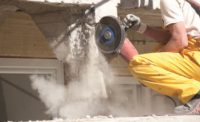OSHA Issues Final Rule on Silica
After months of speculation, the Occupational Safety and Health Administration (OSHA) issued its highly anticipated final rule and recommendations for limiting worker exposure to silica dust.
The rule is designed to curb a long list of health problems related to exposure to breathable crystalline silica. It’s also expected to cause widespread changes to the construction trade, and the roofing industry, in particular.
OSHA set two standards — one for the construction industry, and one for general industry and maritime operations, effective on June 23. The key provision of the rule reduces the allowable exposure limit to 50 micrograms per cubic meter of air averaged over a traditional eight-hour shift.
Employers will now have to:
·Use engineering controls like water or ventilation to mitigate exposure levels;
·Provide respirator when those controls cannot limit exposure;
·Limit worker access to high-exposure areas;
·Develop a written exposure plan
·Offer medical exams to highly-exposed employees
·Train workers on silica risks and best practices to eliminate exposure.
The construction industry is required to be in full compliance first, with a deadline of June 23, 2017.
Silica exposure is tied to several serious illnesses including lung cancer, silicosis and kidney disease. Roughly 2.3 million American workers are exposed to silica dust, including 2 million construction workers that drill, cut, or grind concrete or stone, according to OSHA’s website. Officials estimate the rule will save more than 600 lives and prevent more than 900 new cases of silicosis annually once full implementation begins.
OSHA created a dedicated page on its website to the final rule for more information - https://www.osha.gov/silica/index.html.
Looking for a reprint of this article?
From high-res PDFs to custom plaques, order your copy today!




